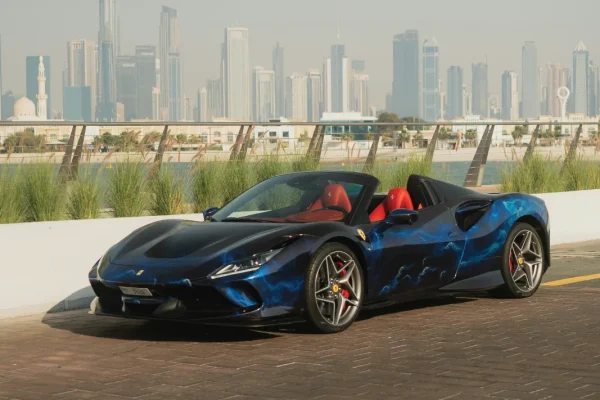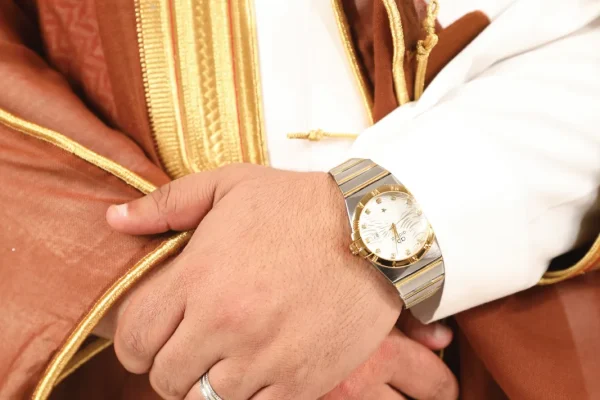The Rise of Sustainable Luxury in the Gulf
- BUZZAAR
-
Oct 01
- Share post

For decades, the Gulf region has been synonymous with opulence. Glittering skyscrapers, luxury shopping avenues, high-end cars, and a culture that embraces grandeur have defined its global image. Yet, beneath this glittering façade, a quiet transformation is underway—one where sustainability is no longer an afterthought but a new definition of luxury.
Across fashion, beauty, real estate, and hospitality, a wave of eco-consciousness is reshaping how consumers and brands alike perceive luxury. The Gulf’s affluent population, once captivated purely by exclusivity and status, is now demanding products and experiences that align with values of environmental responsibility, wellness, and ethical consumption. BUZZAAR explores how this shift is taking shape across the GCC and the brands leading the way.
Fashion: When Green Meets Glamour
Luxury fashion has always thrived in the Gulf, home to some of the world’s largest malls and highest per-capita spenders on designer labels. But a new consumer profile is emerging—younger, socially aware, and unwilling to compromise on sustainability.
International brands have taken notice. From Gucci’s carbon-neutral runway shows to Stella McCartney’s plant-based materials, eco-luxury is no longer niche but mainstream. These global trends resonate strongly in GCC markets like Dubai, Doha, and Riyadh, where Gen Z and millennial consumers are increasingly vocal about ethical fashion.
Local designers are also carving a niche by weaving sustainability into their identity. Noora Hefzi, the Dubai-based designer, is celebrated for her timeless silhouettes crafted in small, ethical batches. In Saudi Arabia, Honayda Serafi’s brand “HONAYDA” blends luxury with conscious sourcing, ensuring minimal waste while spotlighting regional craftsmanship.
Meanwhile, rental platforms and resale apps are gaining traction among fashion-savvy consumers. Initiatives such as Designer-24 in the UAE or global luxury resale platforms now operating in the GCC allow customers to enjoy couture without adding to the cycle of overproduction. This shift not only challenges the traditional notion of ownership but also brings sustainability to the forefront of high fashion.
Beauty: Clean, Green, and Luxurious
The beauty industry in the Gulf is also undergoing a green revolution. For years, luxury beauty was associated with exclusivity, exotic ingredients, and lavish packaging. Today, luxury beauty is increasingly defined by clean formulations, cruelty-free practices, and eco-friendly packaging.
Global players like Chanel and Dior are rethinking packaging with refillable models, while skincare houses like La Mer are investing in ocean conservation initiatives. The UAE has also seen a boom in homegrown clean beauty brands. Shiffa Beauty, founded by Emirati Dr. Lamees Hamdan, combines natural ingredients with a holistic philosophy rooted in the region’s wellness traditions. Similarly, KJ Serums from Oman has gained popularity for its minimalist, effective formulations that prioritize both skin health and environmental sustainability.
This shift isn’t just about product development—it reflects the GCC consumer’s evolving mindset. Shoppers today want to know the story behind their serum or lipstick: Where was it sourced? Is it cruelty-free? Can the packaging be recycled? Beauty, once about prestige alone, is now about conscious indulgence.

Real Estate: Sustainable Luxury Living
Perhaps the most striking transformation is unfolding in the real estate and hospitality sectors, where eco-luxury living is becoming a new standard. The GCC, with its ambitious cityscapes and futuristic developments, is reimagining luxury homes and resorts through a green lens.
In Dubai, projects such as The Sustainable City offer net-zero energy villas, solar-powered infrastructure, and green spaces that redefine luxury living. Residents enjoy both exclusivity and the peace of mind that their homes tread lightly on the environment. In Saudi Arabia, the NEOM megaproject promises a new model of sustainable urbanism, combining high-tech innovation with environmental stewardship.
Luxury hospitality is also embracing the trend. Resorts in Oman and the UAE are investing heavily in eco-tourism experiences, from coral reef conservation programs to farm-to-table dining concepts. For high-net-worth travelers, true luxury increasingly means privacy, authenticity, and harmony with nature—not excess.
Why Sustainability Equals Luxury in the Gulf
Sustainability and luxury might seem like opposing forces—one rooted in restraint, the other in indulgence. But in the Gulf, the convergence makes perfect sense.
- Exclusivity Through Rarity – Eco-conscious luxury often involves limited production, artisanal craftsmanship, and rare materials—qualities that align seamlessly with luxury consumers’ desire for uniqueness.
- Cultural Resonance – The Gulf’s heritage emphasizes stewardship of natural resources, from water conservation in desert life to respect for natural remedies. Sustainable luxury revives these traditions in a modern form.
- Global Prestige – For GCC consumers, luxury is also about global relevance. By embracing sustainability, they align with international standards and trends, enhancing status not only locally but globally.
- Next-Gen Consumers – The GCC has one of the world’s youngest populations. These consumers are digital natives, exposed to global environmental movements, and eager to reflect their values in their purchasing power.
Eco-Initiatives to Watch
- Dubai’s Green Fashion & Lifestyle Exhibition: An annual event showcasing sustainable fashion and lifestyle brands, highlighting how luxury and sustainability can coexist.
- Saudi Green Initiative: A national movement planting 10 billion trees, which will inevitably influence real estate and luxury lifestyle developments.
- Local Jewelry Brands: Designers like Aisha Baker are experimenting with ethically sourced gems and recycled metals, proving fine jewelry can sparkle without guilt.
- Circular Economy Start-ups: Companies like Cartlow in the UAE, focusing on re-commerce and refurbishment, are adding sustainable convenience to the luxury lifestyle ecosystem.
The Future of Sustainable Luxury in the GCC
Looking ahead, the rise of sustainable luxury is not just a passing trend but a long-term transformation. GCC governments are investing heavily in green infrastructure, and brands that fail to adapt risk losing relevance in a rapidly evolving market.
For consumers, sustainable luxury offers the best of both worlds—the indulgence of fine living coupled with the assurance of ethical, eco-conscious choices. Whether it’s slipping into an ethically crafted couture gown, applying a clean luxury serum, or stepping into a solar-powered villa overlooking the Gulf, the message is clear: true luxury is no longer just about owning more, but about owning better.
Key Insights – As BUZZAAR continues to track lifestyle trends across the region, one truth stands out: the Gulf is redefining luxury for the world, proving that sustainability and sophistication can not only coexist but thrive together.

